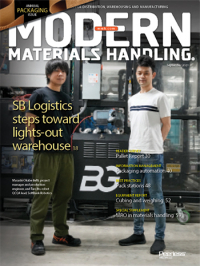Paper packaging with a great rate of change
A highly flexible yet strong and stiff paper packaging material reduces packaging costs and shipment damage compared to conventional bubble pack. Bring in the sustainability of paper, and the rate of change just accelerated.
Did you just hear that?
There it goes again. And again. Rapid fire now.
Sounds a lot like someone popping bubble pack in the next office. Don’t know exactly why, but isn’t bubble popping just plain fun? Some even call it stress relief.
However, if Lorne Herszkowicz has his way, he’s going to pop that bubble of ours altogether. His mission in life is to substitute paper-based packaging for all that plastic. After a few years as a partner at HexcelPack, he’s got a running start.
In fact, three of North America’s largest retailers now use HexcelPack’s cushioning paper, known as HexcelWrap, in both their retail and e-commerce operations.
HexcelWrap is paper with precise cuts to allow the paper to flex and expand its volume while maximizing the strength and stiffness of the paper fibers. That combination of stretch, strength and stiffness is what gives the material its cushioning properties, says Herszkowicz.
Believe it or not, 5-liter bottles of cranberry juice were Herszkowicz’ big break. Well, actually that’s more a turn of phrase than a fact because the glass bottles didn’t break during test shipments when wrapped in the paper packaging—which was pretty remarkable because breakage had been a major problem. And nobody likes 5 liters of cranberry juice dripping from a shipping carton. It’s just gross.
Better yet, the paper packaging reduced packaging costs. The total cost of packaging and shipping the juice was reduced by more than 25%. And we don’t have to dwell on the obvious here: Paper packaging is much more sustainable than plastic of any type.
Herszkowicz calls that combination a return on change (ROC). Haven’t heard that one before, but it works. So, what is possible here beyond cranberry juice?
Herszkowicz cites another test that involved protecting the contents of 125,000 packages a year. The packaging materials changed from 3/16-inch bubble packaging to HexcelWrap.

For each package, the actual cost of packaging materials was $1.08 for bubble packaging and $1.05 for paper. Freight costs were reduced nearly 20% with paper due in no small part to the ability to use smaller shipping cartons. But the big savings came in the reduction of damage to the product being shipped. In fact, that savings came to $240,000 for those 125,000 cartons shipped. That, says Herszkowicz, is the rate of change for HexcelWrap in that application.
During the past six years, he says more than 14,000 HexcelWrap dispensing units have been installed to protect items as different as pharmaceuticals and, yes, cranberry juice. Herszkowicz says the juice win was the most gratifying accomplishment for him. Not just because it worked, but because the retailer had told him they doubted it could.
The guy in the next office is still popping those bubbles. It must be a rough day.

Article Topics
Packaging News & Resources
Registration open for Pack Expo International 2024 Pack Expo East has largest show to date Optimize Parcel Packing to Reduce Costs CMC Packaging Automation North America unveils Tech Center in Atlanta PACK EXPO East brings latest packaging technologies to Philadelphia Loftware’s cloud-based labeling solutions take center stage Flexcon unveils its innovative bin solutions More PackagingLatest in Materials Handling
Beckhoff USA opens new office in Austin, Texas Manhattan Associates selects TeamViewer as partner for warehouse vision picking ASME Foundation wins grant for technical workforce development The (Not So) Secret Weapons: How Key Cabinets and Asset Management Lockers Are Changing Supply Chain Operations MODEX C-Suite Interview with Harold Vanasse: The perfect blend of automation and sustainability Consultant and industry leader John M. Hill passes on at age 86 Registration open for Pack Expo International 2024 More Materials HandlingAbout the Author
Subscribe to Materials Handling Magazine

Find out what the world's most innovative companies are doing to improve productivity in their plants and distribution centers.
Start your FREE subscription today.
April 2024 Modern Materials Handling

Latest Resources












